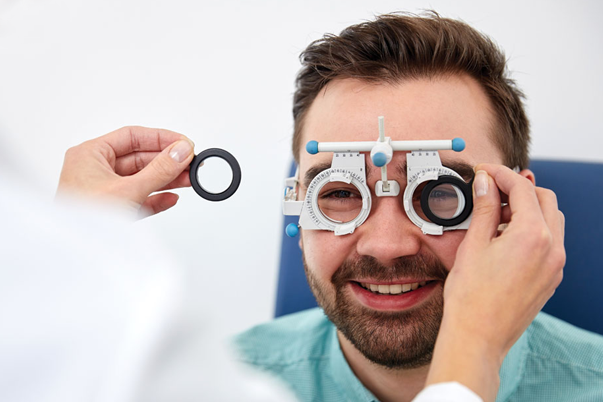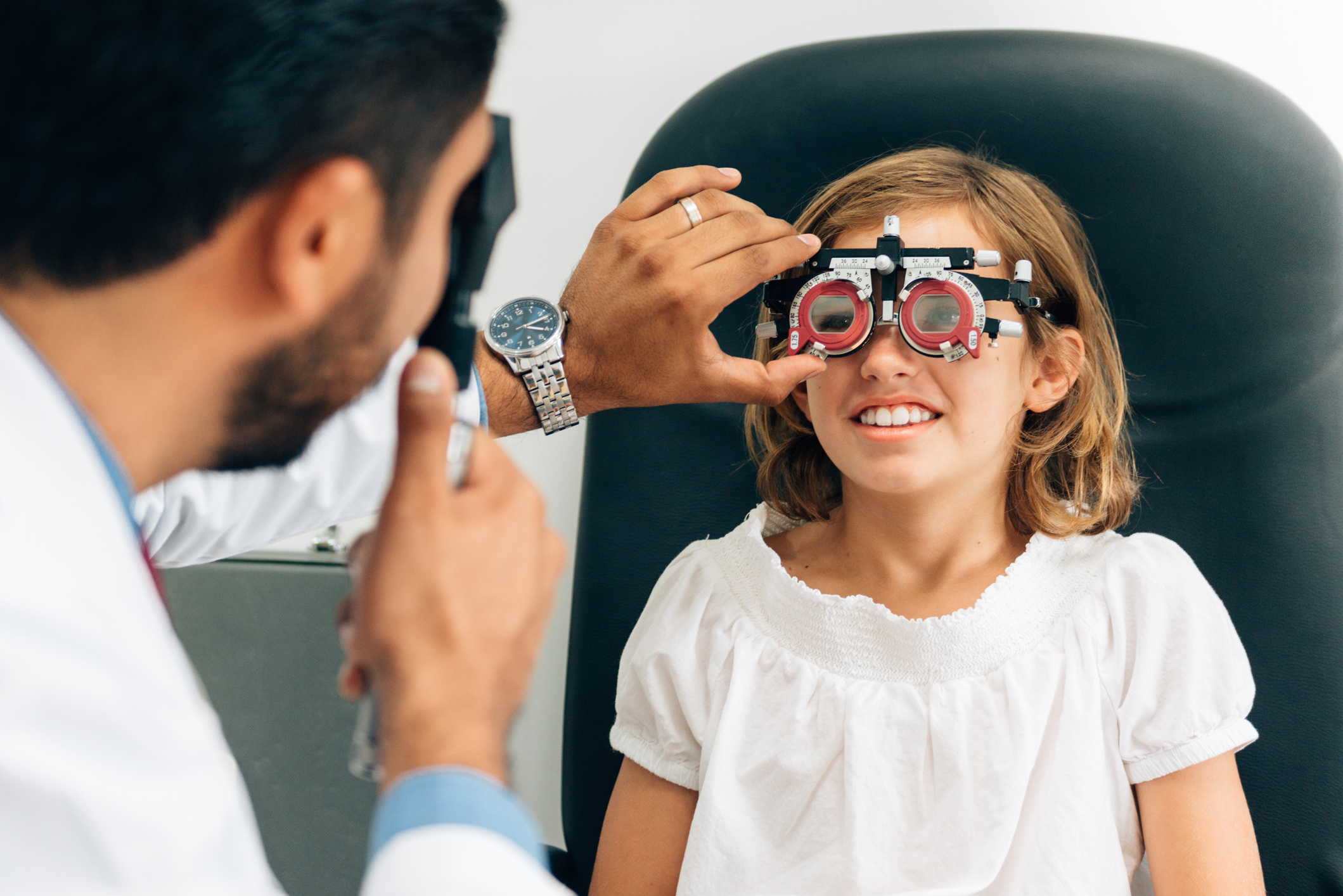 LynbrookOptical
LynbrookOpticalMenu
Binocular Vision Disorders
Sat Dec 30 2023Unveiling the Common Causes of Binocular Vision Dysfunction
Have you ever experienced double vision or found it difficult to focus on objects? These symptoms could be a sign of a Binocular Vision Disorder. Binocular vision is the ability of both eyes to work together to create a single, clear image[1]. However, when the eyes fail to coordinate effectively, it can result in vision problems. This condition can have a significant impact on a person's quality of life and everyday activities. In this article, we will explore what binocular vision disorders are, their causes, symptoms, and treatment options.
Defining Binocular Vision Disorders
Binocular vision disorders are a group of conditions that affect the way the eyes work together. When both eyes fail to coordinate effectively, it can lead to a range of symptoms such as double vision, blurred vision, or depth perception problems. This condition is not limited to any specific age group and can occur in both children and adults.

Types of Binocular Vision Disorders
There are several types of binocular vision disorders, and each type presents with unique symptoms. These are the common types of binocular vision disorders and how they can impact your daily life:
- Convergence Insufficiency (CI)
Convergence insufficiency is a common binocular vision disorder where the eyes have difficulty turning inwards to focus on objects close-up[2]. People with CI may experience double vision, eye strain, headaches, and difficulty reading or doing close work for extended periods. CI can often be corrected with a program of eye exercises, vision therapy, or with the use of prism glasses.
- Strabismus
Strabismus, also known as crossed or wandering eye, is a binocular vision disorder where the eyes are misaligned and do not work together. Strabismus can cause double vision, poor depth perception, and a reduced ability to track moving objects. This condition can be corrected with vision therapy, glasses, or surgery, depending on the severity of the case.
- Amblyopia
Amblyopia, or "lazy eye," is a binocular vision disorder that results in poor vision in one eye. This can happen when one eye has better visual acuity than the other, or when the eyes are misaligned. Amblyopia can cause poor depth perception, difficulties with eye-hand coordination, and even loss of vision in the affected eye. Vision therapy, eye patches, and corrective lenses are often used to treat amblyopia.
- Diplopia
Diplopia, or double vision, is a binocular vision disorder where a person sees two images instead of one. This can happen when the eyes are misaligned or when there is an issue with the eye muscles. Diplopia can cause headaches, eye strain, and difficulty with depth perception. Treatment for diplopia depends on the underlying cause and can indicate a serious and sometimes urgent health issue. Diplopia can be caused by several factors, including trauma or injury, neurological conditions, and BVD.
How do you know if you Have Binocular Vision Dysfunction?
Binocular vision disorders can be difficult to diagnose because they often present with symptoms that are similar to other eye conditions. However, there are several signs that can indicate the presence of a binocular vision disorder. If you are experiencing any of the following symptoms, it is essential to seek professional eye care to determine if you have a binocular vision disorder.
- Double Vision: One of the most common signs of a binocular vision disorder is double vision, also known as diplopia. Double vision occurs when the eyes are misaligned and are not working together to create a single, unified image. This can result in an individual perceiving two distinct images of one object. Double vision can be constant or intermittent and can occur at any distance.
- Eye Strain and Headaches: Eye strain and headaches are common symptoms of binocular vision disorders, especially when performing activities such as reading or computer work. Eye strain can feel like burning or itching sensations in the eyes, while headaches may feel like pressure or tightness in the temples or forehead.
- Difficulty with Depth Perception: People with binocular vision disorders may have difficulty judging distances and perceiving depth. This can make activities such as driving, playing sports, and navigating stairs challenging.
- Eye Fatigue and Discomfort: Eye fatigue and discomfort are common symptoms of binocular vision disorders, especially when performing activities that require visual focus for extended periods. This can cause discomfort, eye fatigue, and a need to take frequent breaks.
- Difficulty with Eye Coordination: People with binocular vision disorders may have difficulty coordinating eye movements, leading to a lack of eye-hand coordination. This can cause problems with activities such as writing, drawing, and playing sports.
What is the Common Cause of Binocular Vision Disorders?
The exact cause of binocular vision disorders is not always known, but some factors can increase the risk of developing this condition. Genetics is one factor that can lead to the development of binocular vision disorders. Children with a family history of strabismus or amblyopia are more likely to develop the condition. Trauma or injury to the eye or head can also lead to binocular vision disorders. Other factors that may increase the risk of developing binocular vision disorders include prematurity, developmental disorders, or other medical conditions.
In some cases, binocular vision disorders can have neurological causes. Stroke, brain injury, or other neurological conditions can affect the brain's ability to process visual information effectively. This can result in symptoms such as double vision, blurred vision, or difficulty focusing. If any of these symptoms occur, it is crucial to promptly seek medical attention.
Diagnosis of Binocular Vision Disorders
Diagnosing binocular vision disorders requires a comprehensive eye exam by an eye care professional. During the exam, the eye doctor will evaluate the eyes' alignment, movement, and visual acuity. They may also perform additional tests to assess the eyes' ability to work together, such as the cover test or the prism test.

Treatment of Binocular Vision Disorders
The treatment of binocular vision disorders depends on the specific type of disorder and its severity. Corrective lenses, such as glasses or contact lenses, may be prescribed to help align the eyes or improve visual acuity. Vision therapy is another treatment option for binocular vision disorders. This involves a series of exercises designed to improve the eyes' ability to work together. In some cases, surgery may be recommended to correct misaligned eyes or to improve eye muscle function.
Binocular vision disorders can have a significant impact on a person's quality of life. If you are experiencing any symptoms of binocular vision disorder, do not hesitate to seek professional eye care. Early detection and treatment can help prevent further complications and improve your vision.
In conclusion, binocular vision disorders are a group of conditions that affect the eyes' ability to work together. There are several types of binocular vision disorders, and each type presents with unique symptoms. Genetics, trauma or injury, and neurological conditions are some of the factors that can increase the risk of developing binocular vision disorders. If you experience any symptoms of binocular vision disorder, it is essential to seek professional eye care. Early detection and treatment can help prevent further complications and improve your vision.
If you have any symptoms of a binocular vision disorder, make an appointment with an eye doctor to protect your vision. You can book a bulk billed eye test with our optometrist online or call us at 03 9702 9118.





